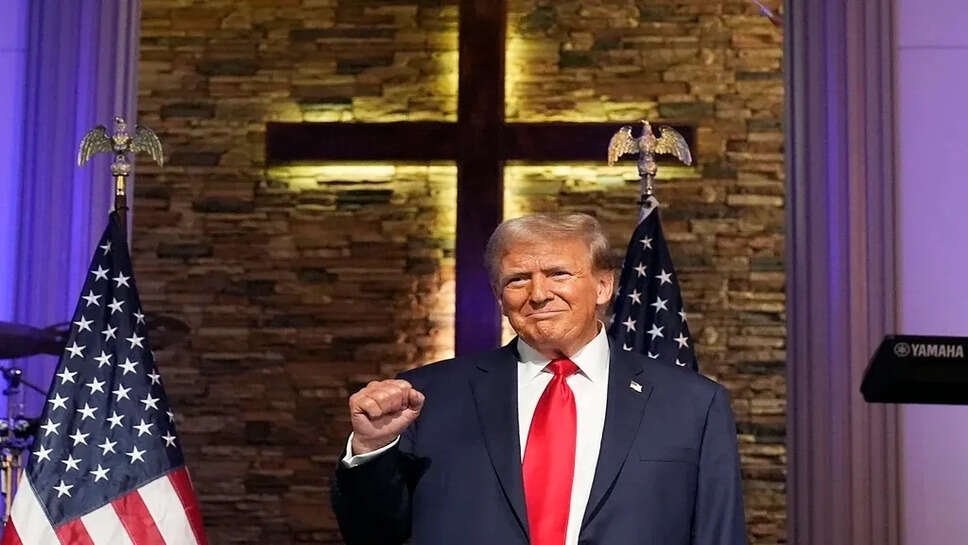Trump’s Tariff Shake-Up Sees Pakistan, Bangladesh Get Better U.S. Access Than India

India’s long-standing trade relationship with the United States has hit a rough patch. In a major reshuffle of tariff structures, the US has granted lower import duties to over 50 countries, including Pakistan and Bangladesh—leaving India facing one of the highest rates among its regional peers. The move has triggered alarm among Indian exporters who now worry about losing their competitive edge in the American market.
What Prompted the Tariff Shake-Up
Under a new policy aimed at “equalizing trade benefits,” the US has adopted a country-specific approach to import duties. Nations that maintain strong trade and strategic ties with the US have managed to secure lower rates. Meanwhile, countries seen as offering limited market access to American goods or having unresolved trade disputes, like India, are being subjected to higher tariffs.
As a result, India’s key exports—ranging from garments and textiles to electronics and leather goods—will now enter the US at significantly higher duty rates than similar goods from Bangladesh and Pakistan. Both neighbours, despite being at a similar economic development stage, have managed to negotiate preferential access.
The Numbers That Matter
The newly introduced tariff system places India under a 25% rate slab on several product categories. In comparison, Pakistan’s exports will enter at around 19%, and Bangladesh at roughly 20%. These may seem like marginal differences, but they have massive implications when dealing with bulk orders and long-term buyer contracts in industries like apparel or electronics.
Indian exporters now fear that global brands may shift sourcing to neighbouring countries where the same quality of goods is available at a significantly reduced import cost, thanks to favorable tariffs.
Impact on Indian Export Sectors
Textiles and Apparel
The textile industry, one of India’s largest employment generators, is likely to feel the heat first. Already facing stiff competition from Bangladesh, Indian apparel manufacturers are grappling with higher production costs and infrastructural delays. Now, higher tariffs make it even harder to compete for US contracts.
Leather and Footwear
Indian leather exports were gradually expanding into US markets, especially in the premium segment. However, with Pakistan offering similar products at lower duties, buyers are likely to reconsider their sourcing strategies.
Electronics and Auto Components
India’s growing electronics and auto components industries have been positioning themselves as alternatives to Chinese suppliers. But elevated tariff barriers could slow down the momentum, especially as Vietnam and other Southeast Asian nations also enjoy lower US tariffs.
Why India Was Left Behind
One key reason India didn’t secure lower tariffs is the slow progress in its trade negotiations with the US. While other countries actively engaged in bilateral talks, India has remained cautious on certain trade conditions, especially around agriculture, data privacy, and market access for American companies.
Additionally, the US has shown a willingness to offer tariff relief to countries that have cooperated on specific geopolitical or economic fronts. In this regard, both Pakistan and Bangladesh took steps—such as signing commodity agreements or easing restrictions on US firms—which may have played a role in securing better tariff terms.
Exporters Raise Alarm
Industry bodies representing Indian exporters have issued statements warning of serious consequences if the situation is not addressed soon. Many businesses had planned expansion and new investments based on steady trade flows to the US. A sudden cost hike from increased tariffs could render these investments unviable.
Smaller exporters, in particular, may find it impossible to absorb the additional cost, forcing them to scale back operations or lose clients to cheaper sourcing hubs.
Jobs and Investments at Stake
With several Indian states relying heavily on exports—especially Tamil Nadu, Gujarat, Punjab, and Maharashtra—the ripple effects of reduced global orders could quickly translate into job losses and stalled projects. Sectors like apparel, which employ millions of workers in rural and semi-urban clusters, are particularly vulnerable.
Furthermore, investors who were eyeing India as a manufacturing alternative to China may rethink their decisions in light of less favourable access to major markets like the US.
How India Can Respond
India still has options. The government can initiate fresh rounds of trade discussions with the US, possibly offering concessions in selected sectors to secure tariff relief. Domestic policy changes—such as increasing export incentives or improving logistics infrastructure—can also help Indian products stay competitive despite higher import duties.
In the medium term, India may also consider strengthening trade ties with other regions like the European Union, Africa, and Southeast Asia to diversify its export markets and reduce dependence on any single country.
Looking Ahead
This tariff disparity is not just an economic issue but a wake-up call for Indian trade diplomacy. The fact that over 50 countries, including neighbours with similar or even lower GDP levels, have secured better terms, indicates a need for more proactive engagement from New Delhi.
If India fails to address this quickly, it risks falling behind in sectors where it was once seen as a rising power. Conversely, if the country uses this moment to restructure its export strategy and pursue smarter negotiations, it could still turn the challenge into an opportunity.
India’s position in global trade is at a critical juncture. The new US tariff structure has exposed the vulnerability of relying too heavily on old trade dynamics. With Bangladesh and Pakistan now enjoying a pricing advantage in one of the world’s largest markets, India must act swiftly to level the playing field. The stakes involve not just export revenue, but millions of livelihoods and the country’s broader ambitions as a global manufacturing hub.
.jpg)